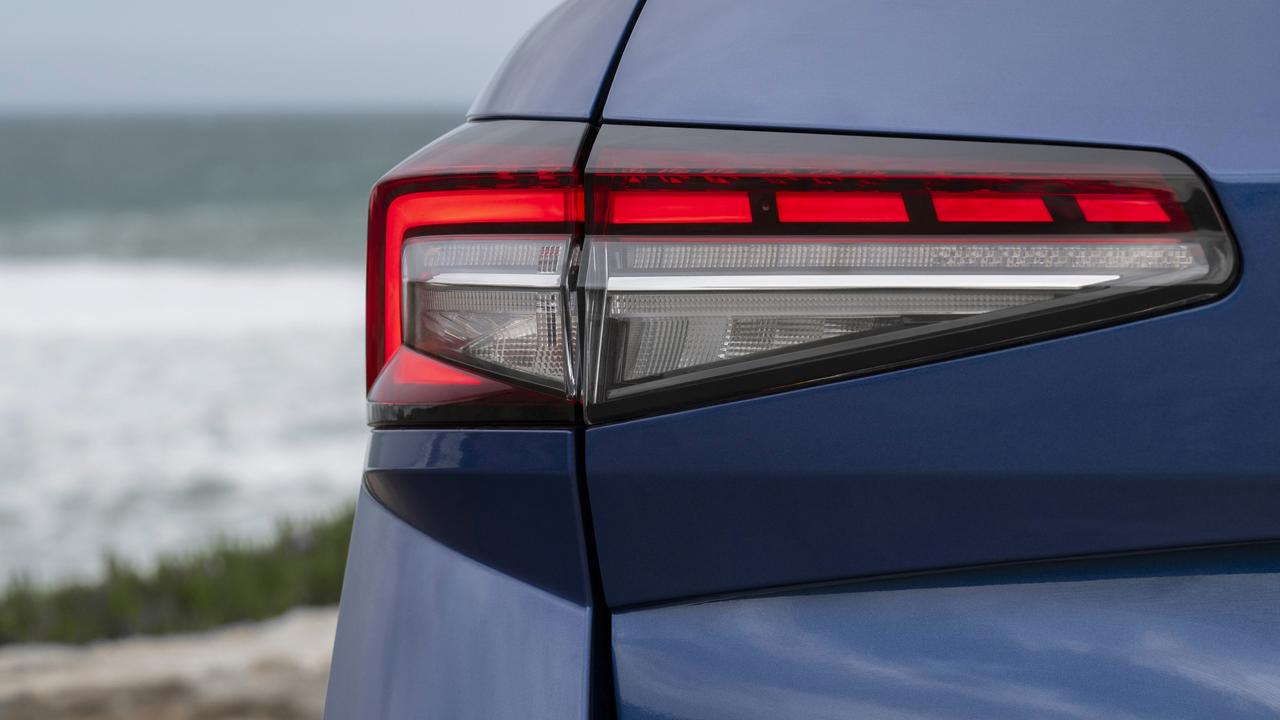Hydrogen powered Toyota HiAce prototype tested
The Japanese giant has created a CO2 emissions free alternative to battery powered cars that is cheaper and easier to refuel.
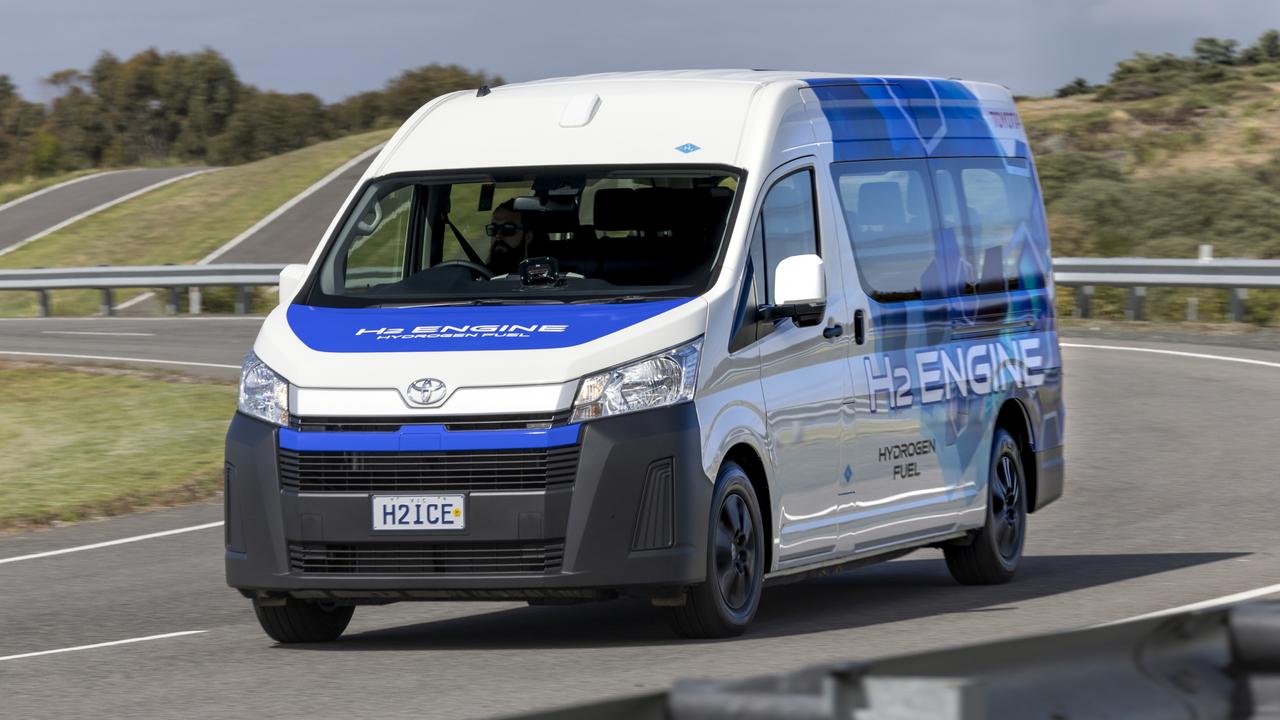
It may have a sizeable engine with two turbochargers for added punch, but accelerating from a standstill in Toyota’s latest clean-and-green prototype demands patience.
The 3.5-litre V6 makes less power than some city hatchbacks. And with 2.6 tonnes of 12-seat van to lug around, getting up to speed is a leisurely process.
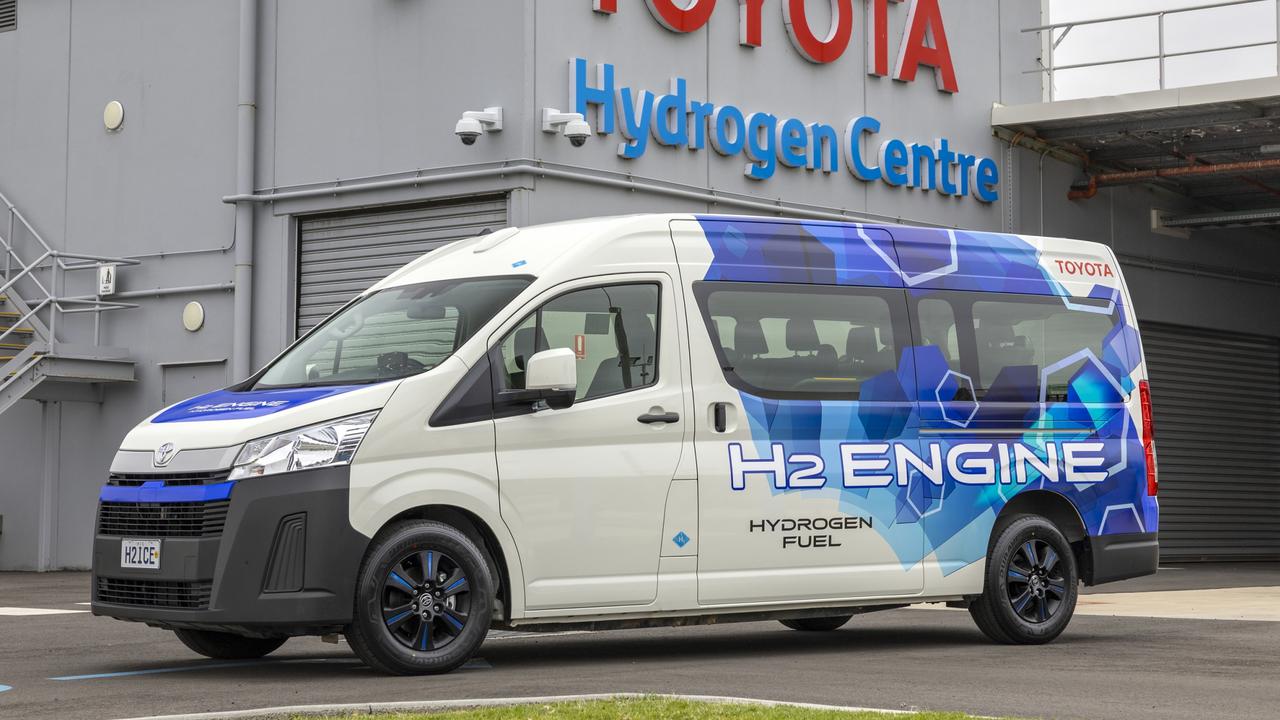
Blame it on the fuel. The one-off HiAce Hydrogen – or “H2ICE” – development vehicle has been tuned to run on the clean fuel as part of Toyota’s moves to lower the carbon emissions of its vehicles.
The engine itself has pedigree. It’s also used in the Lexus LX600 (and some LandCruisers overseas) where it makes 305kW and 650Nm.
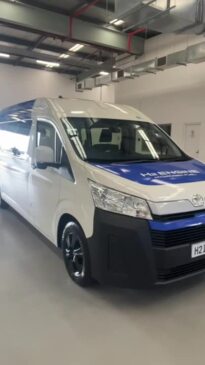
But in the hydrogen HiAce prototype those outputs are a more mundane 120kW and 354Nm.
From the outside the only things giving the prototype’s hydrogen secrets away are big stickers. Under the bonnet are some additional cables and a blue-tinged plastic cover over the engine highlighting the H2 within.
Inside, too, there are still umpteen places to store a notebook or phone and that Toyota grey plastic that looks like it’ll fend off decades of Australian sunshine with Teflon-like efficiency.
But the fuel gauge on the dash sits limp on its E indicator because it has no petrol.
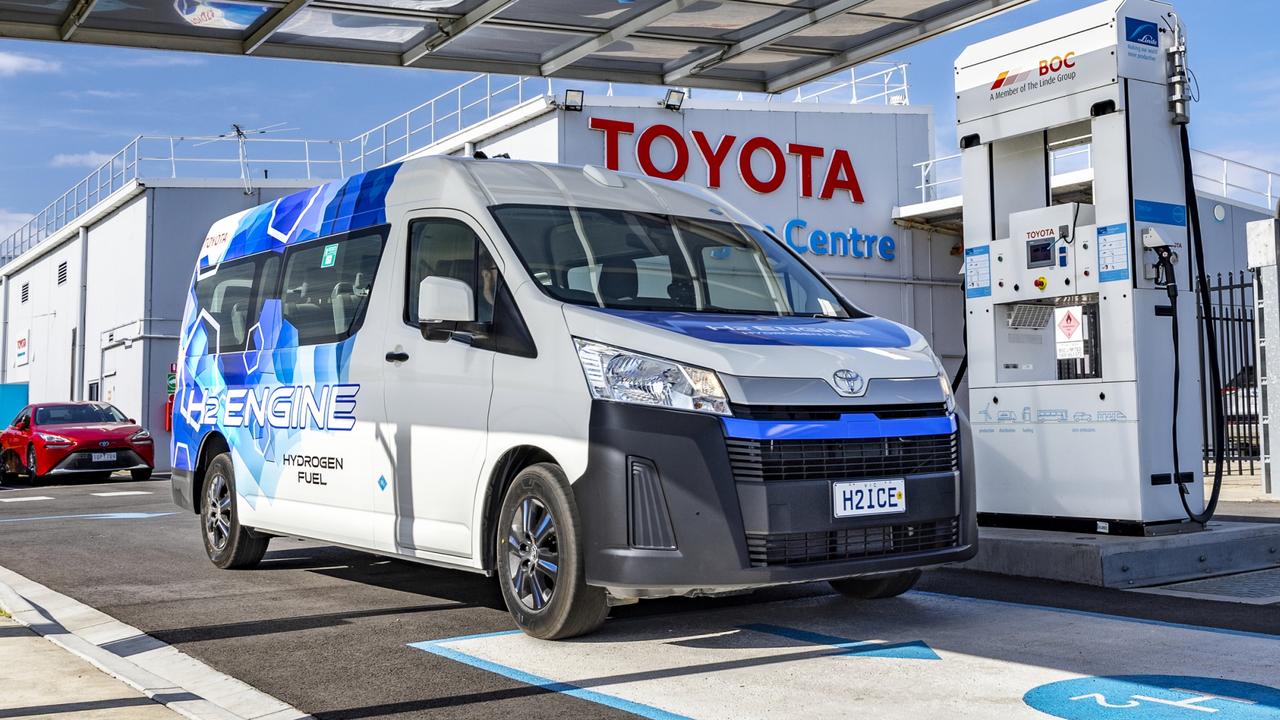
A temporary digital display stuck to the top of the dash provides engineers with information about the hydrogen system and allows real-time data transfer back to Japan as part of the evaluation program that aims to one day offer hydrogen-fuelled HiAces in dealerships.
There’s 5.6kg of hydrogen housed in three cylindrical carbon fibre tanks stashed under the floor.
The tanks are borrowed from the Toyota Mirai, which creates electricity from its hydrogen fuel cell system to power an electric motor. It’s far more efficient and cleaner than burning hydrogen in an internal combustion engine.
But Toyota says the HiAce Hydrogen prototype – “the first commercial demonstration of a hydrogen internal combustion engine” – is a relatively simple and affordable way to use existing technology to get to near-zero CO2 emissions.
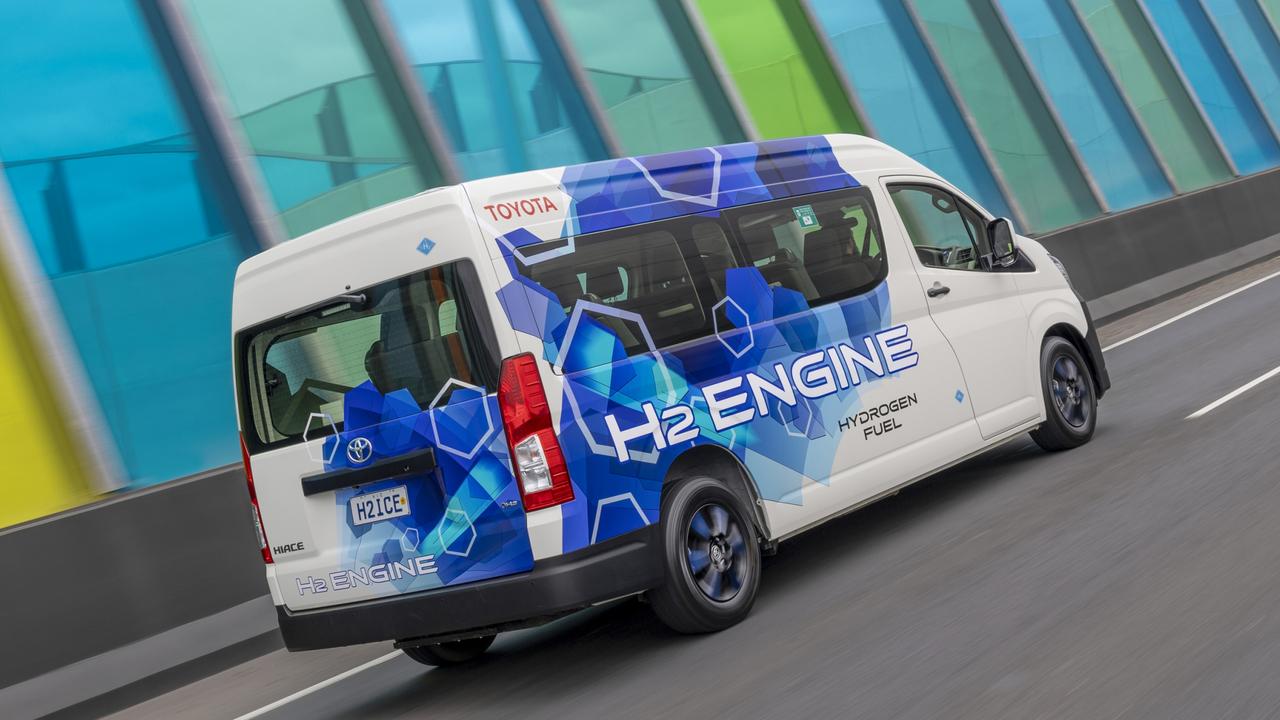
Toyota Australia sales and marketing chief Sean Hanley says a production version of the HiAce would be available at “a very competitive and compelling price” compared with a petrol-fed engine.
“We have full intent to commercialise this at some stage and at that point in time we believe this type of technology will have good price parity and be a very compelling and competitive image for the consumer.”
Press the throttle, though, and it’s clear what is normally a hearty V6 engine is not making anything like what it could.
The engine spins up as if in slow motion, the tachometer winding towards its upper limits and the engine making the same noises as if it was burning petrol.

The 10-speed auto ensures those revs remain relatively high to keep things bubbling along.
My drive was brief and limited to a flat test track at Toyota’s vast Altona facilities in Melbourne but reaching the 100km/h speed limit proved a challenge for the big bus.
The engineer in charge of developing the engine says changing things such as the valves would improve the engine and bring it closer to the outputs you’d expect of an engine of this capacity.
But that appears to go against the idea of keeping things simple.
The big sales pitch is its normality and that almost all the components are shared with existing Toyotas.
The one big thing missing from the hydrogen equation is the hydrogen itself. There are only six places to refuel a hydrogen car in Australia, one of which is behind closed gates at Toyota’s Altona facility.
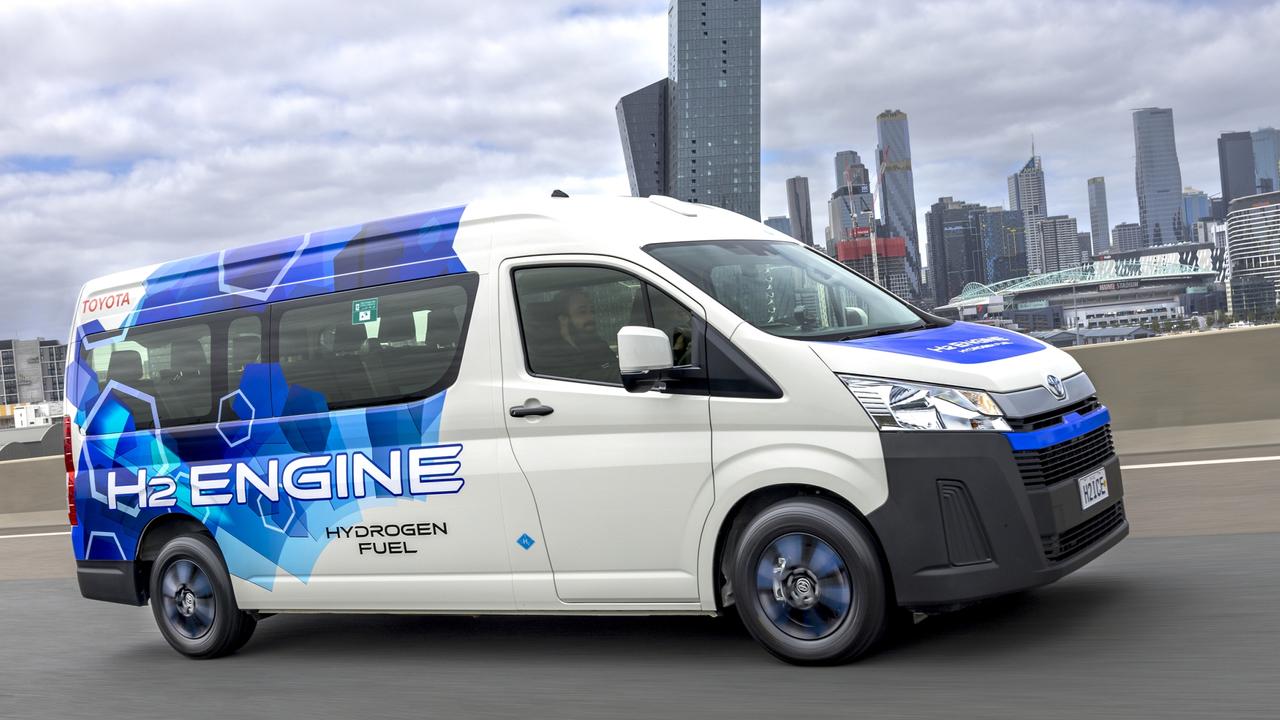
Whereas electricity is available around the country, the success of a project like this would rely on the establishment of an extensive refuelling infrastructure, which doesn’t look like happening in the medium term.
Burning hydrogen is also inefficient, with only a fraction of the energy used to power the vehicle.
Nevertheless Toyota is adamant it can play a role.
The Hydrogen HiAce that will be evaluated by selected fleets in Australia is the next step in a program that could eventually touch vehicles such as the LandCruiser and HiLux.



